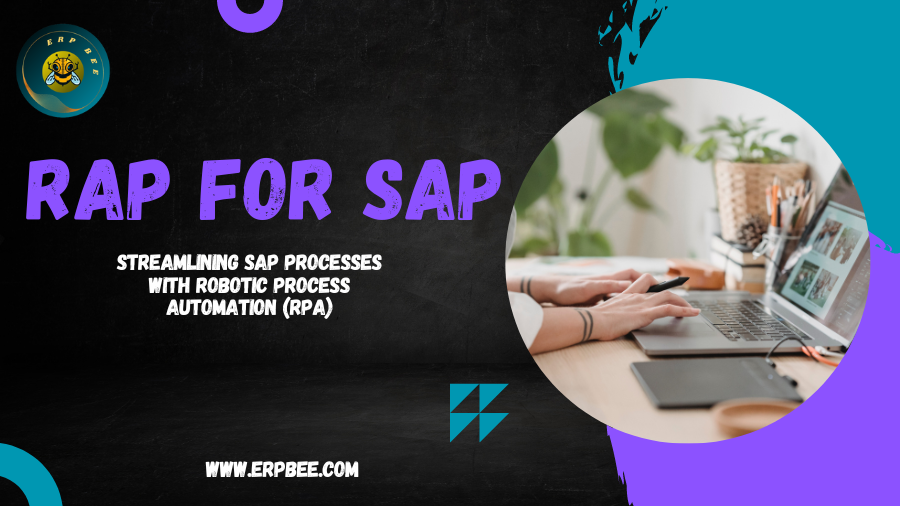In today's fast-paced business environment, organizations are constantly seeking innovative solutions to enhance efficiency and productivity. One such solution is Robotic Process Automation (RPA), a cutting-edge technology that automates repetitive and rule-based tasks. When it comes to enterprise resource planning (ERP) systems, SAP is a dominant player, and combining RPA with SAP can deliver remarkable results. In this blog, we will explore how RPA can streamline SAP processes, improve accuracy, reduce costs, and drive operational excellence.
Understanding Robotic Process Automation (RPA):
Robotic Process Automation involves the use of software robots or "bots" to automate routine tasks, mimicking human actions within software applications. RPA enables organizations to automate data entry, data validation, report generation, and other repetitive tasks. By leveraging RPA, businesses can achieve increased efficiency, enhanced accuracy, and improved employee productivity.
Benefits of RPA for SAP:
Improved Accuracy and Data Quality: RPA eliminates the potential for human errors in SAP processes. Bots perform tasks consistently and precisely, leading to accurate data entry, reducing the likelihood of errors, and improving data quality within SAP systems.
Enhanced Efficiency and Productivity: By automating repetitive tasks in SAP, Robotic Process Automation frees up valuable employee time and enables them to focus on more strategic activities. This leads to increased productivity and enables organizations to accomplish more in less time.
Cost Reduction: Robotic Process Automation significantly reduces operational costs associated with manual SAP processes. By automating tasks, organizations can reduce the number of human resources required, eliminate the need for overtime work, and minimize the risk of costly errors.
Scalability and Flexibility: RPA provides scalability and flexibility to handle fluctuating workloads. Bots can be easily scaled up or down based on demand, allowing organizations to optimize resource allocation and respond quickly to changing business requirements.
Process Standardization and Compliance: Robotic Process Automation ensures consistent adherence to predefined rules and regulations within SAP processes. By standardizing processes, organizations can achieve compliance, reduce the risk of non-compliance penalties, and enhance auditing capabilities.
Use Cases of RPA in SAP:
Order Processing: RPA can automate order creation, validation, and tracking in SAP systems. Bots can extract data from customer orders, update inventory, generate invoices, and even notify customers of order status, thereby reducing manual effort and ensuring timely order fulfillment.
Invoice Processing: RPA can streamline the invoice processing cycle by automatically extracting invoice data, matching it with purchase orders and receipts, and updating SAP systems. This eliminates manual data entry, reduces processing time, and minimizes errors.
Master Data Management: RPA can automate the creation and maintenance of master data within SAP systems. Bots can extract data from external sources, validate and cleanse it, and update the relevant SAP modules. This ensures data consistency, and accuracy, and reduces the risk of duplicate or outdated records.
Report Generation: RPA can automate the generation of reports in SAP, eliminating the need for manual data extraction and formatting. Bots can fetch data from multiple sources, perform calculations, and generate reports in predefined formats, providing real-time insights for decision-making.
Implementing RPA for SAP:
Identify and Prioritize Processes: Begin by identifying SAP processes that are repetitive, rule-based, and have significant manual effort. Prioritize processes based on their impact on efficiency, accuracy, and cost reduction.
Design and Development: Engage RPA developers or experts to design and develop automation workflows. Collaborate with SAP experts to ensure seamless integration between RPA and SAP systems.
Testing and Validation: Thoroughly test the developed RPA workflows to ensure they function as intended. Test various scenarios, handle exceptions, and validate the accuracy of data processing. Conduct user acceptance testing to gather feedback and make necessary refinements.
Deployment and Monitoring: Deploy the RPA solution in a controlled environment, closely monitoring its performance and impact on SAP processes. Continuously monitor the bots, track their activities, and address any issues that arise. Regularly assess the effectiveness of RPA in achieving desired outcomes.
Training and Change Management: Provide comprehensive training to employees who will be interacting with the RPA solution. Educate them about the benefits, functionalities, and best practices of using RPA in SAP. Implement change management strategies to ensure the smooth adoption and integration of RPA into the organization's culture.
Best Practices for Successful RPA Implementation in SAP:
Start with a Proof of Concept (PoC): Begin with a small-scale PoC to demonstrate the value and feasibility of RPA in SAP processes. Identify a pilot process, automate it using RPA, and measure the results before scaling up.
Collaborate with SAP Experts: Involve SAP experts throughout the Robotic Process Automation implementation journey to ensure seamless integration, data integrity, and compliance with SAP standards and regulations.
Maintain Documentation: Document the RPA workflows, configurations, and any customizations made to SAP systems. This ensures transparency, and knowledge transfer, and simplifies future enhancements or modifications.
Security and Access Control: Implement robust security measures to protect sensitive data within SAP systems. Define access controls and user permissions to ensure only authorized personnel can interact with the Robotic Process Automation solution and SAP.
Continuous Improvement: Regularly assess the performance and impact of Robotic Process Automation in SAP processes. Seek feedback from users, monitor key performance indicators, and identify opportunities for further automation or process optimization.
Conclusion
Robotic Process Automation (RPA) has emerged as a game-changing technology for optimizing SAP processes. By automating repetitive tasks, organizations can achieve enhanced efficiency, improved accuracy, and significant cost savings. RPA enables seamless integration with SAP systems, streamlining processes such as order processing, invoice management, and report generation. By following best practices and collaborating with SAP experts, businesses can successfully implement RPA in their SAP landscape, driving operational excellence and achieving a competitive edge in today's digital era. Embracing RPA for SAP is a strategic step towards unlocking the full potential of automation and reaping the benefits of an optimized ERP system.
